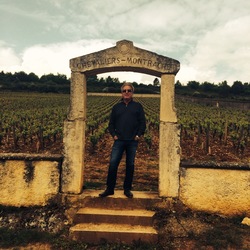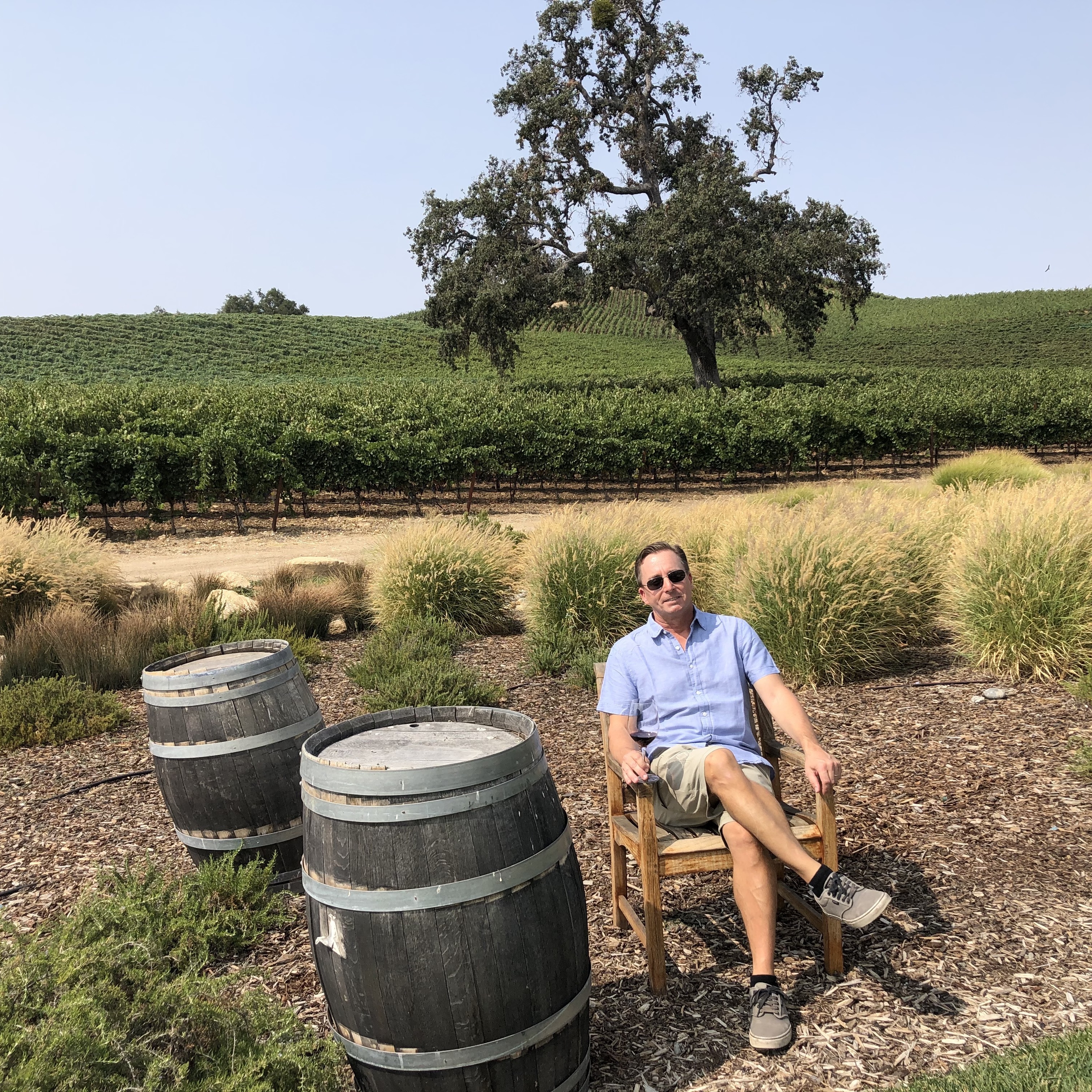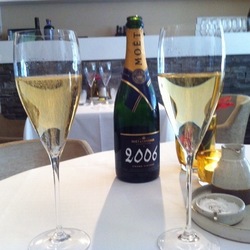Iconic St Ignatius
Bond
St. Eden Napa Valley Cabernet Sauvignon Blend 2016
It is time for my #FridayCabernetfix.
Dark ruby in color with a short reddish/brick rim.
Fruity nose with blackberries, black plums, dried figs, cedar, vanilla, licorice, tobacco, chocolates, spices, herbs, light eucalyptus, light earth, black tea and black pepper.
Full-bodied, soft and elegant, with medium acidity and long legs.
Dry on the palate with blackberries, black currants, plums, cooked cherries, cedar, toast, light vanilla, licorice, light herbs, spices, light earth, chocolates, tobacco, peppercorn, coffee and cola.
Long finish with fine grained tannins and tangy cherries.
This is a gorgeous Cabernet Sauvignon based Bordeaux blend from Napa valley. Rich and extracted. Fruit forward and complex. Well balanced and elegant.
An iconic wine that still needs more time in the bottle to mature properly. Although it is 9 years old, it still feels very young. Will continue to age nicely in the next 25 years. This Single Vineyard is showing great potential.
Good right out of the bottle, and so much better after 3 hours of decanting.
Wine Advocate 98 points. Wine Spectator 96 points.
A great sipping wine that will also pair nicely with a big piece of steak.
14.8% alcohol by volume.
94 points.
$750. — 7 months ago
Pellet Estate
Trouvaille Cabernet Sauvignon 2019
One of my favorites from Premiere Napa Valley 2020. #pnv20 #pnv2020 #napa only 5 cases produced. Highlights
A vibrant blend of two clones of Cabernet Sauvignon and a bit of Merlot, revealing silky tannins, complexity and elegance
The heritage Pellet Vineyard dates to 1863 and is among the earliest in St. Helena
100% estate, 100% French oak (Darnajou and Cadus), 100% passion; produced by hand, vineyard to bottle
A very lucky find indeed—the best of the best from the Pellet Vineyard, a true labor of love
Pellet Estate’s 2018 Cabernet Sauvignon “Trouvaille” is 100 percent estate fruit from the historic Pellet Vineyard and is a blend of Clone 4 and Clone 337 Cabernet Sauvignon, with a bit of Merlot. It is a wine with grip – vibrant and complex, yet shows elegance, balance, all while packed with flavors of dark fruit, hints of chocolate and spice, showing silky tannins with a seductive mouthfeel. This wine represents the absolute authentic expression of the Pellet Vineyard and is classically made by iconic vintner Tom Rinaldi. Quite frankly, as Tom and Eric think, “It’s a lucky find indeed.”
Wine Facts
Wine is unfiltered
Single vineyard wine
Sustainably produced
Wine is 100% estate grown and bottled — 4 years ago

St. Supéry Estate Vineyards
Dollarhide Reserve Cabernet Sauvignon 2017
St. Supéry – Dollarhide Cabernet Sauvignon 2019
Napa Valley, California – USA 🇺🇸
Overview
The Dollarhide Ranch, a 1,530-acre estate in the northeastern hills of Napa Valley, is St. Supéry’s crown jewel, with over 500 acres planted to vines at elevations ranging from 600 to 1,100 feet. The high-altitude soils and warm, sunny climate yield Cabernet Sauvignon of great concentration and structure. The 2019 Dollarhide is 100% estate-grown Cabernet Sauvignon, a pure expression of this iconic vineyard.
Aromas & Flavors
Opens with powerful aromas of cassis, blackberry compote, and black cherry, intertwined with hints of licorice, dark chocolate, tobacco leaf, and a subtle graphite edge. On the palate, layers of ripe black fruit meet notes of espresso, cedar, and dried herbs, all lifted by a touch of vanilla and spice from oak aging.
Mouthfeel
Full-bodied, dense, and powerful, with firm, fine-grained tannins and a solid backbone of acidity. The finish is long and persistent, echoing dark fruit, cocoa, and savory spice, promising longevity.
Winemaking Notes
Estate fruit is carefully hand-harvested, sorted, and fermented in stainless steel. The wine spends 18–20 months in French oak barrels (≈40% new), giving structure, polish, and subtle oak complexity without overpowering the fruit.
Food Pairing
Ideal with grilled ribeye, short ribs, or lamb chops. It also shines with braised meats or hearty dishes like beef bourguignon. For a vegetarian option, pair with mushroom risotto or lentil stew.
Verdict
A bold yet refined Napa Valley Cabernet, 2019 Dollarhide captures the essence of mountain-grown fruit: concentrated, structured, and age-worthy. Drink with decanting now, or cellar for 10–15 years to reveal its full complexity. Cheers! — 2 months ago
Château Figeac
Petit-Figeac Red Blend 2021
Petit-Figeac 2021
Saint-Émilion, (Right Bank) Bordeaux, France 🇫🇷
Overview
This is the second wine of Château Figeac, one of the most iconic estates in Saint-Émilion, known for its unique terroir of gravel and its mastery of blending. The 2021 Petit-Figeac is crafted primarily from Merlot, Cabernet Franc, and Cabernet Sauvignon, offering a more approachable and earlier-drinking alternative to the Grand Vin, yet still carrying the château’s unmistakable finesse.
Aromas & Flavors
Nose: charming and expressive, with ripe red berries, fresh plum, redcurrant, and subtle floral notes, accented by hints of cedar and graphite.
Palate: elegant progression with cherry, cassis, and blackberry, wrapped in gentle oak spice and refined tannins, leading into a long, polished finish.
Mouthfeel
Medium-bodied, with a silky texture, precise acidity, and a refined balance between fruit and structure. Less powerful than the Grand Vin, but wonderfully harmonious and expressive, highlighting its youthful vibrancy.
Winemaking & Style
Produced with the same care as Château Figeac, using fruit from younger vines and select parcels. Aged in French oak barrels, it offers a more accessible and supple version of Figeac’s signature style, while still carrying excellent complexity.
Food Pairing
Ideal with roast duck, beef carpaccio, lamb chops, or mushroom risotto. Also pairs beautifully with semi-hard cheeses like Comté or Manchego.
Verdict
A refined and beautifully balanced second wine that captures the spirit of Figeac in a softer, earlier-drinking style. Enjoy now through the next 7–10 years. A brilliant way to taste the elegance of this legendary estate without opening the Grand Vin. — 10 months ago
Holsten-Brauerei
Astra Urtyp
The original Pilsener from my home town. Everyone in Hamburg rates it at least 90 points and everyone else rates in no higher than 80 points. 🤣 iconic, smooth, and mild. And in quarantine on St Patrick’s, it’s ok to have a German Pilsener. — 6 years ago
St. Supéry Estate Vineyards
Rutherford Merlot 2017
St. Supéry – Merlot 2019
Rutherford, Napa Valley, California – USA 🇺🇸
Overview
Made from 100% estate-grown Merlot, this wine comes from St. Supéry’s iconic Rutherford vineyards in the heart of Napa Valley. Known for its iron-rich, alluvial soils, Rutherford imparts the famed “Rutherford Dust” character — a mix of fine tannins and earthy elegance that sets these wines apart.
Aromas & Flavors
On the nose, vibrant red and dark fruits dominate — ripe cherry, plum, and blackberry — accented by hints of violet, graphite, and a dusting of cocoa. The palate is layered with red currant, cassis, and chocolate, alongside savory undertones of sage and tobacco.
Mouthfeel
Medium to full-bodied with velvety tannins and bright acidity. The wine is plush yet structured, with an elegant balance that lingers on a smooth, cocoa-dusted finish.
Winemaking Notes
Estate fruit is hand-harvested, sorted, and fermented in stainless steel to retain freshness, followed by aging in French oak (a combination of new and seasoned barrels). This approach builds texture and depth while allowing the varietal character to shine.
Food Pairing
Pairs beautifully with roasted duck, pork tenderloin, mushroom risotto, or herb-crusted lamb chops. A natural companion to semi-hard cheeses like Manchego or aged Gouda.
Verdict
A benchmark Rutherford Merlot, marrying plush fruit with earthy elegance. The 2019 vintage offers depth and refinement, drinking beautifully now yet capable of aging gracefully for another 6–8 years. Cheers! — 2 months ago
Bucklin
Old Hill Ranch Mixed Whites White Blend 2023
13.6% ABV Light in color. Bright acid, ample citrus, apple. Mixed white vineyard planted in 2010. Consists of 14 varieties propagated at Old Hill Ranch utilizing cuttings from iconic heritage sites— including Malvasia, Riesling, Gewurztraminer, Chasselas, Clairette, Semillon and Grenache Blanc planted on St. Charles rootstock.
Really nice wine, great job Will! — 6 months ago










Freddy R. Troya
Château Chauvin – Grand Cru Classé 2010
Saint-Émilion, Bordeaux – France 🇫🇷
Blend: 75% Merlot, 20% Cabernet Franc, 5% Cabernet Sauvignon
Overview
A Grand Cru Classé estate on Bordeaux’s Right Bank, Château Chauvin’s 2010 vintage reflects both the power of the year and the estate’s Merlot-driven finesse. (Educational note: Saint-Émilion’s Right Bank wines are often Merlot-heavy, offering richness, depth, and long-lived structure.)
Aromas & Flavors
Plum, blackberry, and cassis at the core, layered with violet, graphite, and cigar box. Secondary notes of cedar, spice, and earthy mineral tones hint at complexity yet to fully unfold.
Mouthfeel
Full-bodied and concentrated, with tightly woven tannins. Decanted for over 2 hours yet still showing a firm grip — tannins remain punishing but promising. Intense fruit lingers into a long, structured finish.
Food Pairings
Best with ribeye steak, braised short ribs, or lamb shank. Also pairs beautifully with aged hard cheeses and truffle-infused dishes.
Verdict
An impactful, ageworthy Saint-Émilion. The 2010 Chauvin is both delicious and intense, a wine that needs time but already impresses with power and complexity. 🍷
Did You Know?
2010 was one of Bordeaux’s most celebrated vintages of the 21st century, known for firm tannins, high concentration, and exceptional aging potential — especially on the Right Bank.
Collector’s Rarity 📌
As a classified Grand Cru Classé from an iconic vintage, the 2010 Chauvin is highly collectible, with decades of life ahead. — a month ago